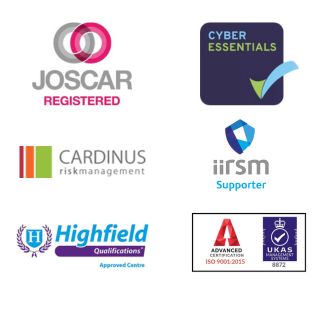What Next for Your Employee Safety After You’ve Implemented Your Business Continuity Plans?

As the impact of COVID-19 hits virtually every sector and business across the UK the effectiveness of Business Continuity Plans has been tested as never before. Whether it’s changing working practices to adopt social distancing, moving non-critical employees to remote working, identifying new markets or providing different products and services the scale and speed of these changes have left minimal time for reviewing some of the longer term health and safety implications for both the business and employees.
With the impact likely to be more months than weeks, once the dust settles and the immediate priorities are addressed, businesses will need to start focusing on the wider impact of these changes going forward and how they transition things once restrictions begin to be lifted and operations go back to something closer to normal.
Reviewing contingency plans regularly and utilising a robust risk assessment process will enable businesses to continue to adapt over the weeks and months to come whilst ensuring the health and safety of employees as well as the financial viability of the business itself.
The information below highlights a few key areas that should be considered within this process.
1. Working from Home – DSE
As working from home becomes the norm for many businesses its important to consider the longer-term implications to employees of working remotely. Employers still have a legal responsibility to ensure that working environments are suitable and that their teams understand best practices when it comes to utilising Display Screen Equipment.
It will be important to talk to employees about DSE (Display Screen Equipment) and ensure that they assess properly their home working set up. Some areas for them to consider include:
- ensuring their PC or laptop screens are at the right height
- sitting on a supportive chair and using a table rather than sitting on a sofa with a laptop on their knee
- limiting or taking breaks from the amount of time spent on mobile devices
One problem faced by employers in doing this is that with a workforce spread across the country and social distancing requirements in place educating staff and completing DSE assessments isn’t an easy task.
There are however, online systems available that can be set up remotely and which include not only important training modules for the staff but an assessment tool and audit trail for line managers.
For more information and guidance read our DSE Assessment blog or contact the team for help setting up an online DSE assessment tool.
2. Working from Home – Wellbeing
This is a challenging and difficult time for everyone. Employees will be concerned about their future employment status and the financial implications, the health of themselves and their family, trying to adapt to different working conditions and in many cases also trying to balance home schooling of their children.
Helping and supporting employees through this time is going to be critical to prevent longer term problems that could prevent the business from moving forward in the future.
From Employee Assistance Programs giving them access to advice and support, ensuring regular communication via team video calls so that they still feel valued and part of the team to utilising the services of occupational health specialists, there are a number of ways that employers can provide help and support.
Developing an employee wellbeing policy during this time, or adapting an existing one to reflect the extraordinary circumstances, will enable the business to help and support employees not only now but in the longer term whilst making them feel valued.
3. Assessing Skills Gaps & Ensuring Adequate Training
There are some businesses or employees that cannot move either wholly or partially to remote working. Ensuring adequate social distancing and protection for those employees will save lives not only of employees but customers and suppliers they deal with.
This could include staggered shift patterns, limiting access to premises, or parts of them, or providing Personal Protective Equipment, ensuring it is correctly fitted and that staff are adequately trained on its use.
The implications of staff being in self isolation or unwell also need to be considered, in particular around whether processes can safely continue with the remaining workforce or whether additional training is required for those that are remaining.
It maybe that with a particular member of the team out, or numbers reduced, that the health and safety risk to the remaining employees is too great to continue with a certain task or service. By continuing to monitor and assess the risks and having a clear record of training across the team the business will be able to quickly make decisions and prevent putting employees at risk.
Utilising online training is a quick way to upskill employees whilst maintaining social distancing requirements.
4. Switching production to supply new markets
It’s clear that businesses have had to adapt and switch to operate in new markets at speed to ensure their survival, once the dust settles they do however need to review the health and safety requirements of their “new world”.
Revisiting existing risk assessments to ensure they have captured changing working practices and identify additional risks to be managed is important, but doesn’t have to be an onerous task.
In such extraordinary circumstances where the situation is continuously changing flexibility is the key to the survival of businesses that doesn’t mean that the health and safety of employees should be compromised as with a practical and pragmatic approach both can be achieved.
Need Help or Advice?
If you need practical health and safety advice and guidance at this time, our team are on hand to help. Simply give us a call on 01666 503686 or contact us here.




